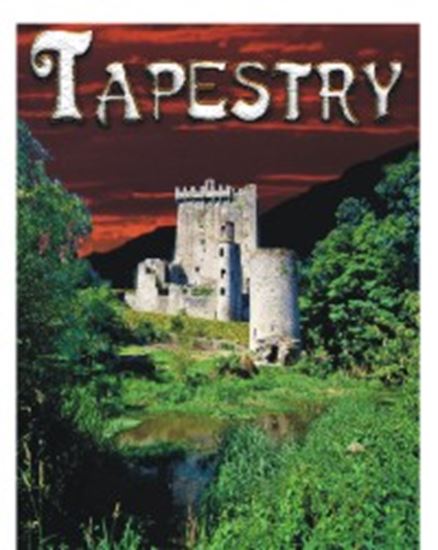





Tapestry
A King, grieving over the death of his son, demands that a weaver create a tapestry that will provide comfort. The woman weaves six tales into her tapestry. The first tells the story of young woman who must learn about herself. The second concerns two farmers who have a chance at a tremendous fortune, but it may cost them everything. Other tales teach more lessons. Finally the Woman weaves the story of Tatiana, a mother who loses her daughter and almost succumbs to her own grief. Upon completion of the tapestry, the King must decide whether he has found consolation and peace. Winner of the 2005 Jackie White Memorial National Children's Playwriting Contest.
Productions
Behind The Scenes
PLAYWRIGHT CRAIG SODARO
TALKS ABOUT "TAPESTRY"
(Winner of the 2005 winner of the Jackie White Memorial National Children's Playwriting Contest.)
Q: WHAT INSPIRED YOU TO WRITE THIS PLAY?
A: One morning I read a single paragraph story about a young child who was killed while riding a horse. We read or hear about such tragedies all too frequently, but this one haunted me from the standpoint of how the survivors deal with the pain of their loss. I used a king as the grieving parent because a king would have every resource at his disposal to handle every situation-except this one. The talented old woman has only one resource at her disposal-her wisdom.
Q: WHAT IS YOUR FAVORITE PART OR LINE IN THE PLAY? WHY?
A: My favorite part comes at the end as the old woman comforts the king with the meanings of the various strands she has woven into the tapestry.
Q: WHERE DO THE CHARACTERS COME FROM? ARE THEY BASED ON PEOPLE YOU KNOW?
A: All characters are based on people we know or have seen or have read about. With six different stories here it's a mixture. Some of the characters in "Tapestry" are very real, especially the king and the old woman. I've also known Edgars and Edwins in real life, as well as the Mother of the three sisters Sophie, Sarah, and Sabrina.
Q: WHAT DID YOU TRY TO ACHIEVE WITH THIS PLAY?
A: I wanted to write about important themes in concrete, everyday situations. I needed a unifying concept, and a tapestry seemed to fit the bill. Tapestries traditionally told a story or pictured the climax of a very important event. The idea of a weaver creating a story out of various strands worked well here. I also wanted to write a play with a very flexible cast. "Tapestry" can be done with as few cast members as twelve or many more than that. Finally, I wanted staging to be very simple. Each story uses a minimum of furniture pieces or props, all easy to obtain.
